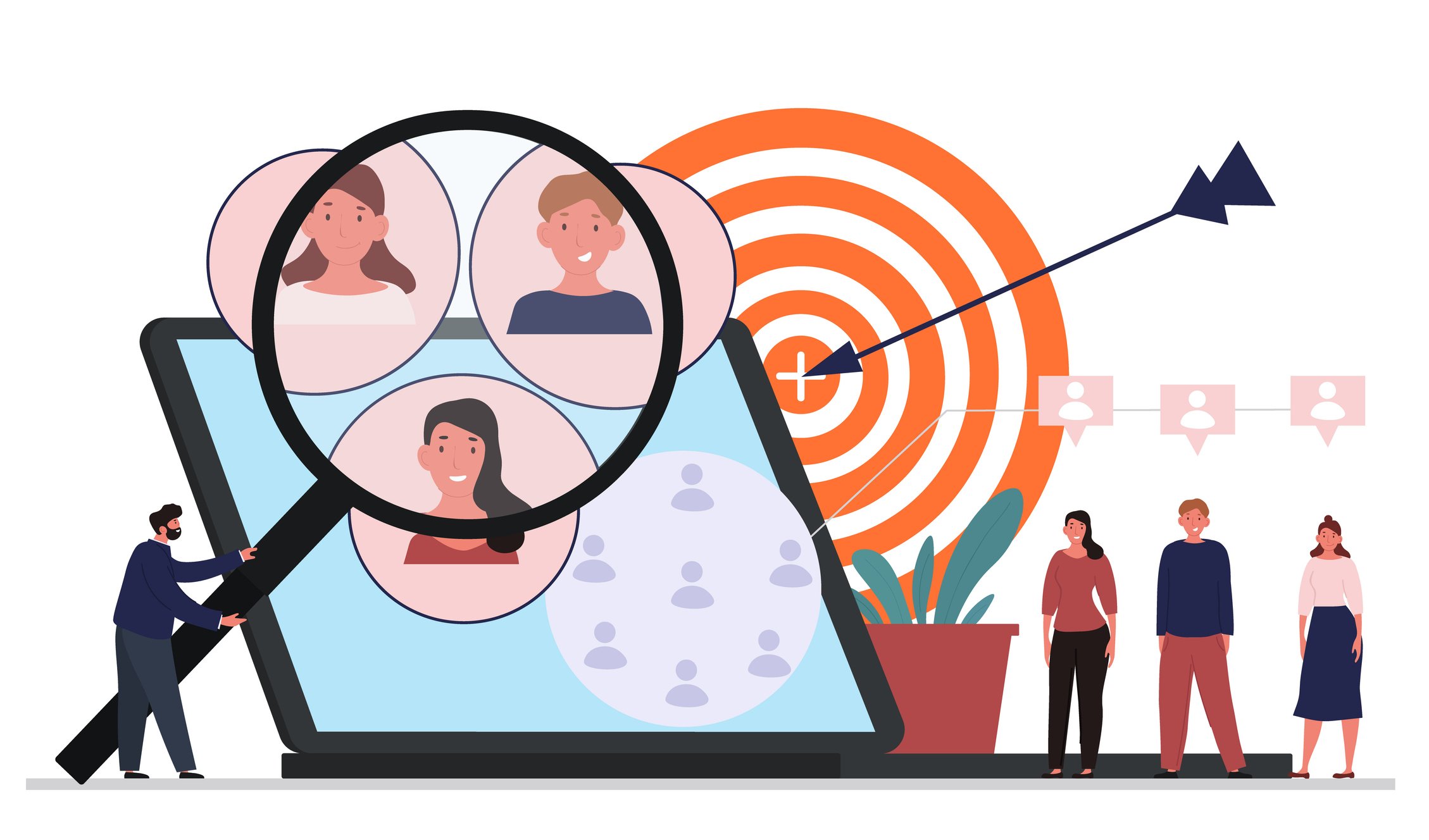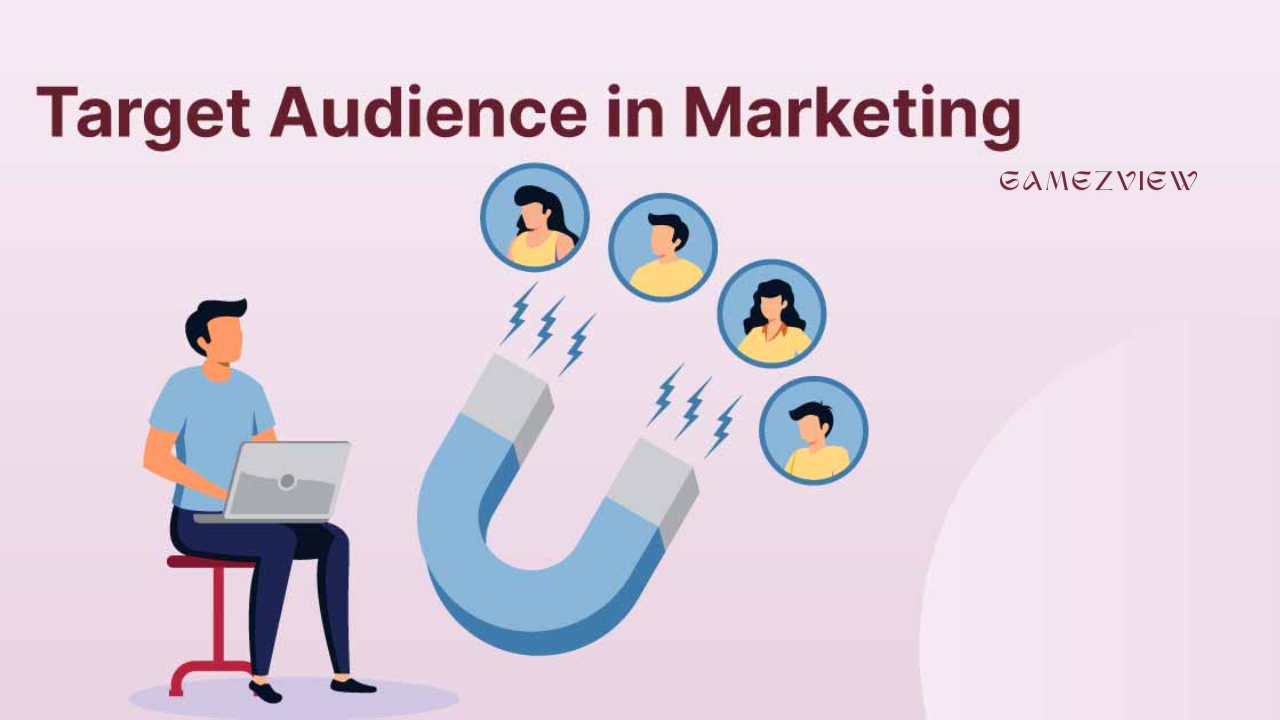In the digital age, where businesses are vying for consumer attention across various platforms, understanding your target audience has become crucial for success. Defining a target audience and understanding their preferences is not just a marketing exercise; it is a strategic necessity that drives business growth. This article will explore the essential aspects of defining a target audience, methods to understand their preferences, and how this knowledge can be leveraged to create effective marketing strategies.
What is a Target Audience?
A target audience refers to a specific group of consumers most likely to be interested in your products or services. These are the individuals or businesses that your marketing efforts are aimed at reaching. The target audience is defined by various characteristics, including demographics, psychographics, behaviour, and more.
Demographics
Demographics are the statistical characteristics of a population, including age, gender, income level, education, occupation, and marital status. For example, if you are selling high-end luxury watches, your target audience may include affluent males aged 30-50 with a high income. Understanding demographics helps narrow down the audience to those most likely to purchase your product.
Psychographics
Psychographics go beyond demographics to explore the lifestyle, values, interests, and opinions of your audience. For instance, a brand selling eco-friendly products might target individuals who prioritize sustainability and environmental consciousness. Psychographics offer deeper insights into why your audience makes certain purchasing decisions.
Behavioural Segmentation
Behavioural segmentation focuses on the actions of consumers, such as their purchasing behaviour, user status, and brand loyalty. This type of segmentation helps in understanding how your target audience interacts with your brand and products. For example, identifying frequent buyers allows you to tailor loyalty programs that keep them engaged.
Geographic Segmentation
Geographic segmentation divides the market based on location. This can include country, region, city, or even neighbourhood. Geographic factors can influence purchasing decisions, especially in cases where cultural differences, climate, or local trends play a role. For instance, winter clothing brands may target regions that experience colder climates.

The Importance of Defining a Target Audience
Defining a target audience is essential for several reasons. It helps businesses focus their marketing efforts, allocate resources efficiently, and create personalized content that resonates with consumers. Here are some key benefits:
1. Efficient Use of Resources
When you know who your target audience is, you can allocate your marketing budget and resources more efficiently. Instead of casting a wide net, you can focus on channels and strategies that are more likely to reach and engage your specific audience. This leads to higher returns on investment (ROI) and reduces waste.
2. Personalized Marketing
Consumers today expect personalized experiences. By understanding your target audience, you can create tailored messages and content that speak directly to their needs, preferences, and pain points. Personalized marketing increases engagement, builds trust, and drives conversions.
3. Improved Customer Retention
A well-defined target audience allows you to build stronger relationships with your customers. When you understand their preferences and behaviour, you can create loyalty programs, offer relevant promotions, and provide exceptional customer service that keeps them coming back.
4. Increased Competitive Advantage
Knowing your target audience gives you a competitive edge. You can differentiate your brand by addressing the specific needs and desires of your audience in a way that your competitors might not. This positions your brand as the preferred choice among your target group.
5. Enhanced Product Development
Understanding your audience’s preferences helps in developing products and services that meet their needs. By gathering feedback and analyzing trends, you can innovate and improve your offerings to stay relevant and competitive.
How to Define Your Target Audience
Defining a target audience requires research, analysis, and sometimes even a bit of trial and error. Here’s a step-by-step guide to help you identify and define your target audience:
1. Analyze Your Current Customer Base
Start by looking at your existing customers. Who are they? What are their common characteristics? Analyzing your customer base provides valuable insights into who is already buying your products or services and why. Use tools like customer surveys, feedback forms, and CRM data to gather information.
2. Conduct Market Research
Market research involves gathering information about your industry, competitors, and potential customers. It helps you identify market trends, consumer behaviour, and gaps in the market. This research can be conducted through surveys, focus groups, interviews, and analyzing industry reports.
3. Create Buyer Personas
A buyer persona is a semi-fictional representation of your ideal customer based on data and research. Creating buyer personas helps you understand your audience’s needs, preferences, and pain points. A well-crafted persona includes demographic details, psychographics, goals, challenges, and buying behaviour.
4. Segment Your Audience
Once you have gathered enough data, segment your audience into smaller groups based on shared characteristics. For example, you might have different segments for age groups, income levels, or geographic locations. Segmentation allows for more targeted and effective marketing strategies.
5. Use Analytics Tools
Digital analytics tools like Google Analytics, social media insights, and email marketing platforms provide valuable data on how your audience interacts with your content. These tools help you track metrics like website traffic, engagement rates, and conversion rates, offering insights into your audience’s preferences and behaviour.
6. Monitor Competitors
Analyzing your competitors can provide insights into their target audience and marketing strategies. Look at who they are targeting, what content they are creating, and how their audience is responding. This information can help you refine your target audience and identify opportunities.
7. Test and Iterate
Defining a target audience is not a one-time process. It requires continuous testing and iteration. Run A/B tests, experiment with different marketing messages, and track the results. Use the data to refine your audience definition and improve your marketing strategies over time.

Understanding Audience Preferences
Once you have defined your target audience, the next step is to understand their preferences. Understanding what your audience wants, how they want it, and when they want it is key to creating content and products that resonate with them.
1. Content Preferences
Content is at the heart of any marketing strategy. Understanding what type of content your audience prefers is crucial for engagement. Some audiences prefer video content, while others might engage more with blog posts, infographics, or podcasts. Use analytics tools to track which content formats perform best and tailor your content strategy accordingly.
2. Platform Preferences
Knowing where your audience spends their time online helps you choose the right platforms for your marketing efforts. For example, a younger audience might be more active on Instagram or TikTok, while a professional audience may prefer LinkedIn. Understanding platform preferences ensures that your content reaches your audience where they are most active.
3. Purchase Preferences
Understanding how your audience prefers to make purchases can inform your sales strategy. Some consumers prefer online shopping, while others might prefer in-store experiences. Additionally, understanding payment preferences, such as credit card, PayPal, or buy now, pay later options, can improve the customer experience.
4. Communication Preferences
Different audiences have different communication preferences. Some might prefer email newsletters, while others might respond better to SMS alerts or social media messages. Understanding these preferences helps you choose the right communication channels and tailor your messages for maximum impact.
5. Product Preferences
Understanding which products or services are most popular with your target audience helps you focus your efforts on the offerings that drive the most value. Regularly analyze sales data, customer feedback, and market trends to stay updated on your audience’s product preferences.
6. Timing Preferences
Timing plays a crucial role in marketing. Understanding when your audience is most likely to engage with your content or make a purchase can significantly impact your marketing success. For example, some audiences might be more active on social media in the evenings, while others might prefer shopping early in the morning. Use analytics tools to track engagement and conversion times and adjust your strategy accordingly.
Future Predictions for the Mobile Gaming Market: What Lies Ahead
Leveraging Audience Insights for Marketing Success
Once you have defined your target audience and understood their preferences, it’s time to leverage these insights to create effective marketing strategies. Here are some ways to do that:
1. Create Targeted Campaigns
Targeted campaigns are designed specifically for a particular segment of your audience. By tailoring your messaging, content, and offers to the needs and preferences of each segment, you increase the likelihood of engagement and conversions. For example, if you know that a segment of your audience values eco-friendliness, you can create a campaign highlighting your brand’s sustainable practices.
2. Develop Personalized Content
Personalization goes beyond using a customer’s name in an email. It involves creating content that speaks directly to their interests, needs, and challenges. Use the data you’ve gathered about your audience to develop personalized content that resonates with them. This could include personalized product recommendations, tailored blog posts, or customized offers.
3. Optimize Customer Journey
Understanding your audience’s preferences allows you to optimize the customer journey from awareness to purchase. Map out the different touchpoints your audience interacts with and ensure each one is optimized to meet their needs. For example, if your audience prefers mobile shopping, make sure your website is mobile-friendly and easy to navigate.
4. Use Data-Driven Decision Making
Data-driven decision-making involves using audience insights and analytics to guide your marketing strategy. Regularly review your data to identify trends, measure the effectiveness of your campaigns, and make informed decisions. This approach ensures that your marketing efforts are always aligned with your audience’s preferences and behaviour.
5. Implement Retargeting Strategies
Retargeting allows you to reach out to consumers who have already interacted with your brand but haven’t made a purchase. By understanding your audience’s behaviour and preferences, you can create retargeting ads that remind them of the products they viewed.

Practical Steps to Implement Target Audience Insights
Having defined your target audience and understood their preferences, it’s time to put this knowledge into practice. Implementing these insights into your marketing strategy involves several practical steps. Here’s how to translate audience understanding into actionable strategies:
1. Develop Audience-Centric Content
Creating content that resonates with your target audience is crucial for engagement. Here’s how to tailor your content effectively:
- Content Themes: Focus on themes and topics that align with your audience’s interests and needs. For example, if your target audience is interested in health and wellness, produce content around fitness tips, healthy recipes, and mental health strategies.
- Content Format: Choose the content format that your audience prefers. If your audience engages more with video content, invest in creating high-quality videos. For an audience that prefers written content, focus on blog posts, articles, and eBooks.
- Content Tone and Style: Match your content tone and style with your audience’s preferences. A professional audience may prefer a formal tone, while a younger audience might engage better with a casual, conversational style.
2. Optimize Digital Marketing Channels
Your understanding of the target audience should guide your choice of digital marketing channels. Here’s how to optimize your channels:
- Social Media: Choose the platforms where your audience is most active. For instance, if you are targeting a younger demographic, platforms like TikTok and Instagram might be more effective than Facebook or LinkedIn.
- Email Marketing: Segment your email lists based on audience preferences and behaviours. Send targeted emails with personalized offers, content, and recommendations that align with their interests.
- Search Engine Marketing (SEM): Use keyword research to identify the search terms your target audience uses. Optimize your PPC campaigns and SEO strategies to ensure your content ranks well for these terms.
3. Enhance User Experience
A positive user experience (UX) is essential for retaining your audience and encouraging conversions. Here’s how to enhance UX based on audience insights:
- Website Design: Ensure your website design is user-friendly and aligns with your audience’s preferences. For example, if your audience prefers mobile browsing, make sure your website is optimized for mobile devices.
- Navigation: Create an intuitive navigation structure that allows users to easily find the information or products they are looking for. Clear menus, search functions, and easy-to-follow paths enhance user experience.
- Loading Speed: A fast-loading website is crucial for retaining visitors. Optimize images, streamline code, and utilize caching to improve loading times and reduce bounce rates.
4. Leverage Data for Continuous Improvement
Ongoing data analysis is key to refining your strategies and staying aligned with your audience’s evolving preferences. Here’s how to leverage data effectively:
- Track Performance Metrics: Regularly monitor key performance metrics such as website traffic, engagement rates, conversion rates, and customer feedback. Use this data to assess the effectiveness of your marketing strategies.
- Conduct A/B Testing: Experiment with different marketing approaches, such as varying headlines, images, or calls to action. A/B testing helps identify what resonates best with your audience and improves campaign performance.
- Gather Feedback: Actively seek feedback from your audience through surveys, reviews, and social media interactions. Use this feedback to make informed adjustments to your products, services, and marketing strategies.
5. Personalize Customer Interactions
Personalization helps build stronger relationships and enhances customer satisfaction. Here’s how to personalize interactions:
- Tailored Recommendations: Use data-driven insights to offer personalized product or service recommendations based on past purchases, browsing behaviour, or preferences.
- Customized Communication: Address customers by their name in emails and messages. Tailor your communication to their interests, past interactions, and behaviour to make it more relevant and engaging.
- Loyalty Programs: Develop loyalty programs that reward customers based on their behaviour and preferences. Offer personalized discounts, exclusive offers, or early access to new products to incentivize repeat business.
6. Align Marketing Strategies with Audience Preferences
Aligning your marketing strategies with audience preferences ensures that your efforts are effective and impactful. Here’s how to achieve alignment:
- Campaign Objectives: Set clear objectives for your marketing campaigns based on audience insights. For example, if your target audience values sustainability, your campaign might focus on promoting eco-friendly practices and products.
- Creative Development: Develop creative assets that resonate with your audience. Use visuals, messaging, and themes that align with their preferences and values.
- Timing and Frequency: Schedule your marketing activities based on when your audience is most active and receptive. Adjust the frequency of your communications to match their engagement patterns.
Case Studies: Successful Target Audience Strategies
Examining real-world examples can provide valuable insights into how businesses effectively define and understand their target audience. Here are a few case studies of companies that have successfully implemented audience-centric strategies:
Case Study 1: Nike’s Personalized Marketing
Nike has excelled in understanding its target audience by leveraging data and personalization. The company uses a combination of demographic, psychographic, and behavioural data to create highly personalized marketing campaigns. Nike’s “NikePlus” membership program is a prime example of this strategy. It provides members with personalized product recommendations, exclusive offers, and tailored content based on their activity and preferences.
Case Study 2: Spotify’s Custom Playlists
Spotify has leveraged audience insights to enhance user experience through personalized playlists. By analyzing listening habits and preferences, Spotify creates custom playlists like “Discover Weekly” and “Release Radar” that cater to individual tastes. This personalization has helped Spotify increase user engagement and retention.
Case Study 3: Amazon’s Recommendation Engine
Amazon’s recommendation engine is a powerful tool for driving sales and enhancing customer experience. By analyzing browsing and purchase history, Amazon provides personalized product recommendations that are highly relevant to each user. This approach has contributed significantly to Amazon’s success in e-commerce.

Challenges in Defining and Understanding Target Audience
Despite the benefits, defining and understanding your target audience can present challenges. Here are some common obstacles and how to address them:
1. Data Overload
With the abundance of data available, it can be overwhelming to extract meaningful insights. To manage data overload, focus on key metrics and use data analytics tools to streamline the process. Prioritize actionable insights that align with your business objectives.
2. Evolving Preferences
Consumer preferences are constantly changing, making it challenging to stay current. Regularly review and update your audience insights to reflect shifts in preferences, behaviours, and market trends. Stay agile and adapt your strategies accordingly.
3. Incomplete Data
In some cases, data may be incomplete or inaccurate, leading to misinformed decisions. To address this, use multiple data sources and validation techniques to ensure the accuracy of your insights. Continuously gather feedback and update your data as needed.
4. Segmentation Complexity
Segmenting your audience into distinct groups can be complex, especially if your audience is diverse. Simplify segmentation by focusing on key characteristics and behaviours. Avoid over-segmentation, which can lead to confusion and diluted marketing efforts.
Defining your target audience and understanding their preferences is a foundational aspect of effective marketing. By identifying the key characteristics of your ideal customers and gaining insights into their needs and behaviours, you can create targeted and personalized strategies that drive engagement, conversions, and business growth.
The process involves analyzing your current customer base, conducting market research, creating detailed buyer personas, and continuously testing and refining your approach. Understanding your audience’s content, platform, purchase, communication, product, and timing preferences allows you to tailor your marketing efforts for maximum impact.
Differences Between Mobile Gaming and Traditional Gaming: A Comprehensive Analysis
Implementing these insights involves developing audience-centric content, optimizing digital marketing channels, enhancing user experience, leveraging data for continuous improvement, personalizing customer interactions, and aligning strategies with audience preferences. Real-world case studies demonstrate the effectiveness of audience-centric strategies in driving success.
Despite the challenges, such as data overload, evolving preferences, incomplete data, and segmentation complexity, businesses can overcome these obstacles with careful planning and data-driven decision-making.
Ultimately, a deep understanding of your target audience not only improves your marketing efforts but also strengthens customer relationships, drives brand loyalty, and positions your business for long-term success in a competitive marketplace.



